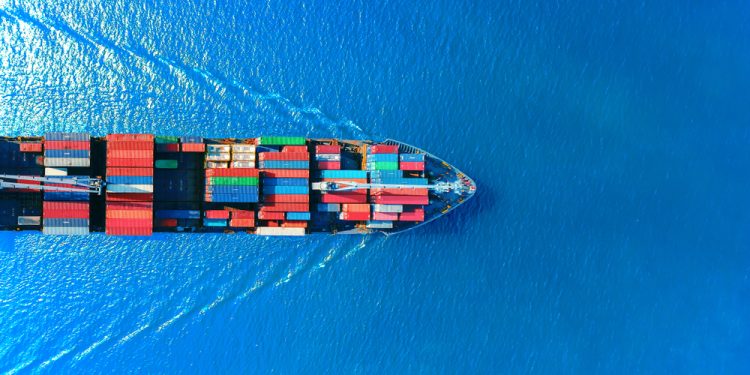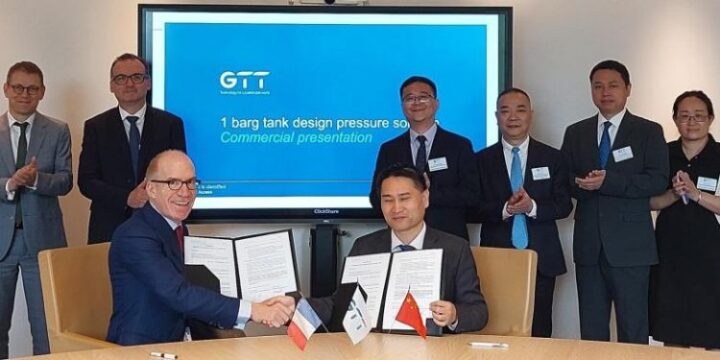July 2, 2025

Cleantech for Nordics has published an open letter in which it highlights that reducing shipping emissions will require a combination of improved energy efficiency, enabling infrastructure, and a shift in how goods are transported.
Cleantech for Nordics is a coalition of investors and others seeking to closely engage with policymakers to ensure that the Nordic region becomes a global hotbed for cleantech innovation, jobs and economic growth. Their objective is to remove costly barriers and uncover new opportunities that can develop and grow the cleantech sector. Cleantech for Nordics aims to pioneer globally competitive industries that can slash carbon emissions, while also increasing energy security across the Nordics and Europe more broadly.
According to Cleantech for Nordics, as Denmark takes on the EU Presidency, there is a chance to drive meaningful progress—especially for shipping, one of the hardest sectors to decarbonize. With the right mix of policy, funding, and demand signals, we can accelerate deployment, attract private investment, and position Europe as a global leader in green shipping.
The letter highlights promising technologies such as green fuels (including biofuels and e-fuels) and electrification, but stresses that the key challenge is scaling these solutions beyond pilot projects. Although public funding has supported early-stage innovation, the transition to commercial-scale deployment remains difficult.
Cleantech for Nordics warns that without a more supportive framework, the estimated $1.5 trillion needed for the global shipping transition will remain out of reach. The letter also lists key recommendations. These include:
1. Accelerating market uptake
Demand-side economic incentives remain critical for leveling the playing field and are essential to establishing a market for low- and zero-carbon fuels and technologies. Policymakers are encouraged to maintain and strengthen these incentives to accelerate market uptake.
2. Bridging the funding gap for mature technologies
Current EU policies and funding frameworks remain insufficient to drive large-scale investment in maturing technologies necessary for net-zero shipping, such as green methanol production. Existing funding mechanisms do not adequately support technologies that are technically ready but not yet cost-competitive at scale, resulting in a gap between innovation readiness and public funding eligibility. The upcoming Sustainable Transport Investment Plan presents an opportunity to address this gap. Additionally, models such as double-sided auctions should be explored to unlock further investment.
3. Using ETS revenues to de-risk investments
Revenues generated from shipping’s inclusion in the EU Emissions Trading System (ETS) should be strategically reinvested to support maritime decarbonization. These funds should be used to drive and scale innovation across the sector, with a focus on efficient deployment to reduce emissions and support emerging technologies. A key priority should be the development of a functioning market for green fuels and technologies. This includes support for both production and mechanisms to de-risk early investments—such as credit guarantees or backing from export credit agencies.
Many promising technologies and developers face barriers due to the absence of long-term offtake agreements supported by creditworthy buyers. By using ETS revenues to mitigate credit risk and enable longer contract durations, the EU can help bridge this gap and catalyze private capital at scale.
4. Creating demand through public procurement
Green public procurement should be leveraged to create stable early demand for clean maritime solutions. Public sector procurement plays a strategic role in de-risking new technologies and fostering market development. Coordinated procurement at the EU level can generate predictable demand, accelerate market formation, and support cost reductions for emerging technologies.
5. Securing clean fuel resilience
Supply-side policies are needed to strengthen Europe’s clean fuel production capacity. To avoid over-reliance on imported solutions and to ensure long-term resilience, investment in scaling domestic production of green maritime technologies must be prioritized.
However, the letter concludes that further steps are needed, particularly unlocking capital, developing robust value chains, and creating market incentives for early movers, to ensure the industry can meet its climate targets.

